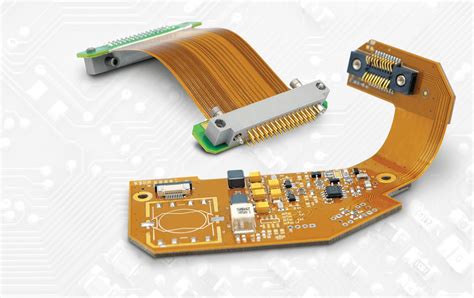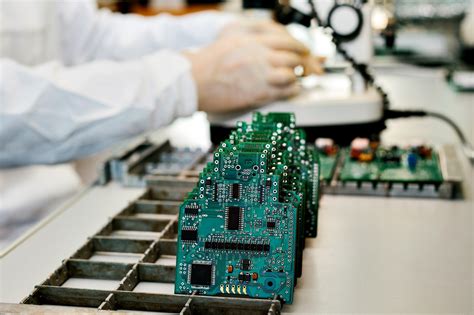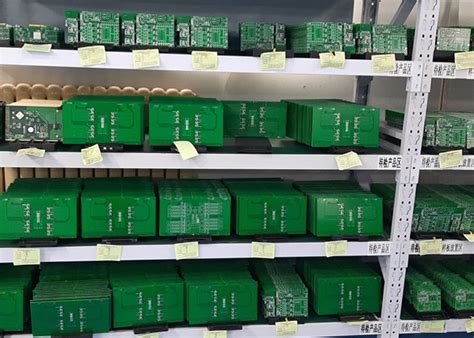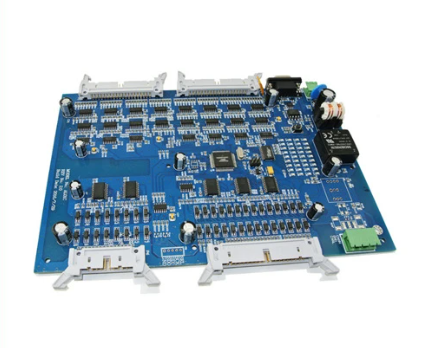Detailed explanation of there special pcb wiring and inspection methods
1.Right-angle routing (three aspects)
The impact of right-angle routing on signals is mainly reflected in three aspects: first, the corner can be equivalent to the capacitive load on the transmission line, slowing down the rise time; second, the impedance discontinuity will cause signal reflection; third, the EMI generated by the right-angle tip, in the RF design field above 10GHz, these small right angles may become the focus of high-speed problems.
2.Differential routing (“equal length, equal distance, reference plane”)
What is a differential signal? In layman’s terms, the driver sends two equal and opposite signals, and the receiver determines the logic state “0” or “1” by comparing the difference between the two voltages. The pair of routing lines that carry the differential signal is called differential routing. Compared with ordinary single-ended signal routing, the most obvious advantages of differential signals are reflected in the following three aspects:
3.Strong anti-interference ability, because the coupling between the two differential routings is very good.
When there is noise interference from the outside, it is almost coupled to the two lines at the same time, and the receiving end only cares about the difference between the two signals, so the common mode noise from the outside can be completely offset.
4.It can effectively suppress EMI.
For the same reason, because the polarity of the two signals is opposite, the electromagnetic fields they radiate to the outside can offset each other. The tighter the coupling, the less electromagnetic energy is released to the outside.
5.Accurate timing positioning.
Because the switching change of the differential signal is located at the intersection of the two signals, unlike the ordinary single-ended signal, which relies on the high and low threshold voltages for judgment, it is less affected by the process and temperature, which can reduce the timing error. At the same time, it is also more suitable for circuits with low amplitude signals. The currently popular LVDS (low voltage differential signaling) refers to this small amplitude differential signal technology.
6.Snake line (adjusting delay)
Snake line is a type of routing method often used in Layout. Its main purpose is to adjust the delay to meet the system timing design requirements. The two most critical parameters are the parallel coupling length (Lp) and the coupling distance (S). Obviously, when the signal is transmitted on the serpentine line, coupling will occur between the parallel segments in the form of differential mode. The smaller S and the larger Lp, the greater the degree of coupling. It may cause the transmission delay to decrease and the signal quality to be greatly reduced due to crosstalk. The mechanism can refer to the analysis of common mode and differential mode crosstalk. The following are some suggestions for layout engineers when dealing with serpentine lines:
7.Try to increase the distance (S) of parallel segments to at least 3H, where H refers to the distance from the signal line to the reference plane.
In layman’s terms, it is to route around a large bend. As long as S is large enough, the mutual coupling effect can be almost completely avoided.
- Reduce the coupling length Lp. When the delay of twice the Lp approaches or exceeds the signal rise time, the crosstalk generated will reach saturation.
- The signal transmission delay caused by the serpentine line of strip-line or embedded micro-strip is smaller than that of micro-strip. In theory, the transmission rate of strip-line will not be affected by differential mode crosstalk.
- For high-speed signal lines and signal lines with strict timing requirements, try not to use serpentine lines, especially not to meander in a small range.
- Serpentine lines at any angle can be often used to effectively reduce mutual coupling.
- In high-speed PCB design, serpentine lines have no so-called filtering or anti-interference capabilities, and can only reduce signal quality, so they are only used for timing matching and have no other purpose.
- Sometimes you can consider winding in the form of spiral routing. Simulation shows that its effect is better than normal serpentine routing.
Surgery is very important, and postoperative recovery is also essential! After talking about PCB wiring, is it over after wiring? Obviously, not! Inspection work after PCB wiring is also necessary, so how to check the wiring in PCB design to pave the way for later design? Please see below!
General PCB design drawing inspection items
1) Has the circuit been analyzed? Has the circuit been divided into basic units for smooth signal?
2) Does the circuit allow short or isolated key leads?
3) Is the shielding effective in the places that must be shielded?
4) Has the basic grid pattern been fully utilized?
5) Is the size of the printed circuit board the optimal size?
6) Are the selected wire width and spacing used as much as possible?
7) Are the preferred pad size and hole size used?
8) Are the photographic plates and schematics appropriate?
9) Are the jumper wires used minimally? Do the jumper wires need to pass through components and accessories?
l0) Are the letters visible after assembly? Are their sizes and models correct?
11) In order to prevent blistering, are windows opened in large areas of copper foil?
12) Are there tool positioning holes?
PCB electrical characteristics inspection items:
1) Have the effects of wire resistance, inductance, and capacitance been analyzed? Especially the impact on the critical voltage drop phase grounding?
2) Is the spacing and shape of wire accessories? Does it meet the insulation requirements?
3) Is the insulation resistance value controlled and specified at the key points?
4) Is the polarity fully identified?
5) Has the effect of the wire spacing on the leakage resistance and voltage been measured from a geometric perspective?
6) Has the medium that changes the surface coating been identified?
PCB physical property inspection items:
1) Are all pads and their positions suitable for assembly?
2) Can the assembled printed circuit board meet the impact and vibration conditions?
3) What is the spacing of the specified standard components?
4) Are loosely installed components or heavy parts fixed?
5) Is the heat dissipation and cooling of the heating components correct? Or is it related to the printed circuit board? PCB and other heat-sensitive components isolated?
6) Are the voltage dividers and other multi-lead components positioned correctly?
7) Are the components arranged and oriented for easy inspection?
8) Have all possible interferences on the PCB and the entire PCB assembly been eliminated?
9) Are the positioning holes the correct size?
10) Are the tolerances complete and reasonable?
11) Have the physical properties of all coatings been controlled and signed?
12) Is the hole and lead diameter ratio within an acceptable range?
PCB mechanical design factors:
Although the PCB supports components mechanically, it cannot be used as a structural part of the entire device. At least every 5 inches on the edge of the PCB, a certain amount of support is provided. The factors that must be considered in selecting and designing PCBs are as follows;
1) The structure of the PCB – size and shape.
2) The type of mechanical accessories and plugs (sockets) required.
3) The adaptability of the circuit to other circuits and environmental conditions. 4) Consider vertical or horizontal installation of printed circuit boards based on factors such as heat and dust.
5) Environmental factors that require special attention, such as heat dissipation, ventilation, shock, vibration, humidity. Dust, salt spray and radiation.
6) The degree of support.
7) Hold and fix.
8) Easy to remove.
PCB installation requirements:
It should be supported at least within 1 inch of the three edges of the printed circuit board. According to practical experience, the spacing between the support points of printed circuit boards with a thickness of 0.031-0.062 inches should be at least 4 inches; for printed circuit boards with a thickness greater than 0.093 inches, the spacing between the support points should be at least 5 inches. This measure can improve the rigidity of the printed circuit board and destroy the resonance that may occur in the printed circuit board.
A certain printed circuit board usually needs to consider the following factors before deciding on the installation technology they use.
1) The size and shape of the printed circuit board.
2) The number of input and output terminals.
3) Available equipment space. 4) The desired ease of loading and unloading.
5) The type of accessories to be installed.
6) The required heat dissipation.
7) The required shieldability.
8) The type of circuit and its relationship with other circuits.
Requirements for the extraction of printed circuit boards:
1) The area of the printed circuit board that does not require the installation of components.
2) The influence of the plug-in and extraction tools on the installation distance between the two printed circuit boards.
3) Special preparation of mounting holes and slots in the design of printed circuit boards.
4) When the plug-in and extraction tools are to be used in the equipment, their size should be considered in particular.
5) A plug-in and extraction device is required, which is usually permanently fixed to the printed circuit board assembly with rivets.
6) Special designs such as load bearing flanges are required in the mounting frame of the printed circuit board.
7) The adaptability of the plug-in and extraction tools used to the size, shape and thickness of the printed circuit board.
8) The cost involved in using the plug-in and extraction tools includes both the price of the tools and the increased expenses. 9) A certain degree of access to the interior of the device is required for fastening and use of plug-in and pull-out tools.
PCB mechanical considerations:
The substrate properties that have an important impact on printed circuit assembly are: water absorption, thermal expansion coefficient, heat resistance, flexural strength, impact strength, tensile strength, shear strength and hardness.
All these properties affect both the function and productivity of the printed circuit board structure.
For most applications, the dielectric substrate of the printed circuit board is one of the following substrates:
1) Phenolic impregnated paper.
2) Acrylic-polyester impregnated irregularly arranged glass felt.
3) Epoxy impregnated paper.
4) Epoxy impregnated glass cloth.
Each substrate can be flame retardant or flammable. 1, 2, and 3 above can be punched. The most commonly used material for plated hole printed circuit boards is epoxy-glass cloth, which has dimensional stability suitable for high-density circuits and can minimize cracks in the plated holes.
One disadvantage of epoxy-glass laminate is that it is difficult to punch within the common thickness range of printed circuit boards. For this reason, all holes are usually drilled and milled to form the shape of the printed circuit board.
PCB electrical considerations:
In DC or low-frequency AC applications, the most important electrical properties of the insulating substrate are: insulation resistance, arc resistance and printed conductor resistance and breakdown strength.
In high-frequency and microwave applications, it is: dielectric constant, capacitance, and dissipation factors.
In all applications, the current carrying capacity of printed conductors is important.
Wire graphics:
PCB wiring paths and positioning
Printed conductors should take the shortest route between components under the constraints of prescribed wiring rules. Limit the coupling between parallel conductors as much as possible. Good design requires the least number of wiring layers, and also requires the widest conductors and largest pad sizes corresponding to the required packaging density. Sharp corners and sharp corners in conductors should be avoided because rounded corners and smooth inner corners may avoid some possible electrical and mechanical problems.
PCB Width and Thickness:
The current carrying capacity of copper conductors etched on rigid printed circuit boards. For 1-ounce and 2-ounce conductors, a 10% reduction in nominal value (measured in load current) is allowed to account for normal variations in etching methods and copper foil thickness and temperature differences; for printed circuit board assemblies coated with protective layers (substrate thickness less than 0.032 inches, copper foil thickness greater than 3 ounces), the components are reduced by 15%; for dip-soldered printed circuit boards, a 30% reduction is allowed.
PCB Conductor Spacing:
The minimum spacing between conductors must be determined to eliminate voltage breakdown or arcing between adjacent conductors. Spacing is variable and depends primarily on the following factors:
1) Peak voltage between adjacent conductors.
2) Atmospheric pressure (maximum operating altitude).
3) Coating used.
4) Capacitive coupling parameters.
Critical impedance components or high-frequency components are generally placed very close to reduce critical stage delays. Transformers and inductive components should be isolated to prevent coupling; inductive signal conductors should be laid orthogonally at right angles; components that generate any electrical noise due to magnetic field movement should be isolated or rigidly mounted to prevent excessive vibration. PCB wire pattern inspection:
1) Is the wire short and straight without sacrificing function?
2) Are the wire width restrictions followed?
3) Is the minimum wire spacing between wires, between wires and mounting holes, between wires and pads… left?
4) Are all wires (including component leads) arranged close together in parallel avoided?
5) Are sharp angles (90° or less) avoided in the wire pattern?
PCB design project inspection list:
- Check the rationality and correctness of the schematic diagram;
- Check the correctness of the component packaging in the schematic diagram;
- The spacing between strong and weak electricity, and the spacing of the isolation area;
- Check the corresponding schematic diagram and PCB diagram to prevent the loss of the network table;
- Whether the component packaging is consistent with the actual object;
- Whether the placement of the component is appropriate:
A. Whether the components are easy to install and remove;
B. Whether the temperature-sensitive components are too close to the heating components;
C. Whether the distance and direction of the components that can generate mutual inductance are appropriate;
D. Whether the placement of the connectors corresponds smoothly;
E. Easy to plug and unplug;
F. Input and output;
G. Strong and weak current;
H. Whether digital and analog are interlaced;
I. Arrangement of components on the upwind and downwind sides;
Check whether there are vias in the upper and lower layers of the same network table, and whether the pads are connected through the holes to prevent disconnection.
Whether the directional components are wrongly flipped instead of rotated;
Whether the mounting holes of the component pins are suitable and can be easily inserted;
Check whether the empty pins of each component are normal and whether there are leaks;
Ensure the integrity of the circuit;
- Check whether the placement of the upper and lower characters is correct and reasonable, and do not put components to cover the characters, so as to facilitate welding or maintenance personnel to operate;
- The connection of the upper and lower layers of the very important lines should not only be connected with the pads of the directly inserted components, but also preferably with vias;
- The arrangement of the power and signal lines in the socket must ensure the integrity and anti-interference of the signal;
- Pay attention to the appropriate ratio of the pads and solder holes;
- Each plug should be placed on the edge of the PCB board as much as possible and easy to operate;
- Check whether the component number is consistent with the component, and the components should be placed in the same direction as much as possible and neatly;
- Without violating the design rules, the power and ground wires should be as thick as possible;
- In general, the upper layer is horizontal and the lower layer is vertical, and the chamfer is not less than 90 degrees;
- Whether the size and distribution of the mounting holes on the PCB are appropriate, and the PCB bending stress is reduced as much as possible;
- Pay attention to the height distribution of components on the PCB and the shape and size of the PCB to ensure convenient assembly.







